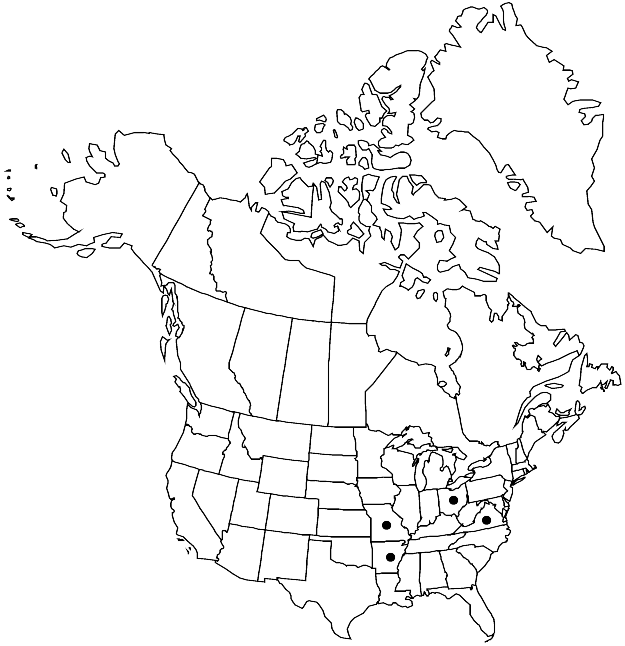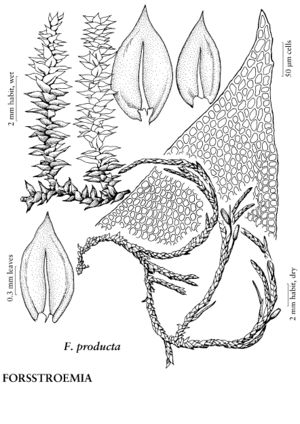Forsstroemia producta
Actes Soc. Linn. Bordeaux, sér. 5, 9: 175. 1895.
Stem and branch leaves ovate to ovate-acuminate, 1.1–1.7 × 0.6–1 mm; costa single, 1/2–4/5 leaf length; laminal cells isodiametric to short-oblong, 1–3:1; medial cells 13–23 × 9–12 µm. Sexual condition gonioautoicous. Seta 1.3–2.1 mm. Capsule emergent or exserted, 1.2–2 × 0.4–0.7 mm; operculum 0.4–0.8 × 0.3–0.5 mm; exostome teeth smooth to granulose. Spores 15–35 µm.
Phenology: Capsules mature winter.
Habitat: Epiphytic on trees, boulders
Elevation: moderate elevations
Distribution

Ark., Mo., Ohio, Va., Mexico (Hidalgo, Nuevo León, Tamaulipas), South America, e Asia, Africa, e Australia.
Discussion
Forsstroemia producta is known from only five sites in the flora area. Recent efforts to recollect it in Ohio were unsuccessful. The interval of fertilization is in late summer and autumn; growth intervals are usually defined by vegetative branches. The secondary stems are erect or somewhat curved; the leaves are imbricate; and the exostome teeth have well-defined plates and occasionally additional external depositions.
Selected References
None.
